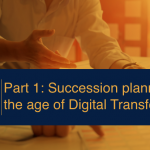In part 1 of our blog on Succession Planning in the Age of Digital Transformation, we looked at the type of leaders organizations will need to groom for success through the Digital Leader Model. The model, which consists of 3 pillars; Agile Mindset, Leading Change, and Driving Business, helps companies by providing a framework to measure the leadership potential of their employees in today’s business environment. While our previous blog focused on the people organizations will need, part 2 focuses on 3 key processes that need to change to make Succession Planning work today.
First, to understand why there are processes that require changing, we need to look at key changes that have come in 2021 and will stay beyond the year that will impact Succession Planning drastically.
Three Changes that impact Succession Planning
Transforming Jobs
Technology had already been impacting jobs rapidly over the last 5 years and the pandemic of COVID-19 became a catalyst to this transformation. Creating a succession planning process around the circumstance that jobs will change is a challenge facing HR. Moreover, the collective of work technologies such as automation, robotics, AI, and such has brought many organizational gains such as lowered production cost and operational efficiency but has also simultaneously shifted jobs in 3 ways: towards extinction, augmentation, or creation.
| Job Shifts | Definition | Example | Forecast |
| Extinction | Jobs that can in totality or at least, for the most part, be done by some form of technology without impacting the customer/business value chain | Travel Agents | With the abundance of easy-to-use travel comparison and booking websites that do not charge as much and provide instant arrangements, people have taken travel bookings into their own hands. |
| Augmentation | Jobs that are automated in part by technology to make work better while still requiring human input but will require new sets of skills to be learned by the people in the roles to ensure customer/business value chain continuity | Marketing Managers | The rise of digital platforms that aim to monetize hyper-targeted marketing combined with needing human touch will make marketing professionals add digital and analytics skills as part of their skills |
| Creation | Jobs that will require people with a completely new set of skills not yet created today but will arise due to innovations in technology and a need to apply those to the work environment | Chief Productivity Officer | The introduction of new technologies, streamlining of departments and a global virtual workforce will need an officer who can analyze data and work trends to advise of productivity leakage |
Impact of Succession Planning on Job Transformation
Evolving Work Policies
The need for social distancing during the pandemic forced companies to adopt new work policies such as work from home and rotational schedules that were previously being experimented by a few progressive organizations. These policies that were thought to perhaps be detrimental to company performance have brought about a paradoxical effect.
One on end, talent identification became harder due to the lack of performance visibility. The ease of evaluating someone’s performance in the office where personal contact is frequent is now lost and performance frameworks will need to be re-evaluated to accommodate virtual work. This means that if HR is evaluating performance as part of their succession planning criteria, a new way to measure this needs to be designed. Also, fostering performance becomes tougher. Unless your employees are 100% intrinsically motivated, it’s difficult to stimulate enthusiasm about your service or product without ample social engagement.
On the other end, talent availability has become easier due to global availability. Virtual work teams now mean that talent can be sourced disregarding geographic locations as long as productivity is not impacted. This widens the HR pool of available successors to a role yet puts employees in a competitive spot.
Shortening Skills Shelf Life
Innovation will make skills obsolete faster, leaving organizations that thrived on “specialist for life” in a vulnerable place. The quicker jobs go extinct, augment, or get created the faster an organization will need employees with newer skills to keep up. This means even their most valuable employees who are high performers today, may start becoming obsolete day by day. The change to HR will be building succession planning pipelines that now have to be based on skills of the future, which at the moment have no clear benchmark. Estimates put the half-life of a professional skill at just 5 years, and this will only get shorter.
With these changes already taking place that will continue to impact the Succession Planning process, the real questions are – what current processes does HR need to change? And what new processes do they need to put in place to ensure organizational success?
If you are unsure how to assess the current skill composition in your organization read our blog on tool selection
Three Key Processes Needed
Fluid Succession Planning
Succession planning can no longer be a one-time static practice in which key talents are selected and developed with a fixed time frame of over a year. It now needs to be looked at as a fluid process – continuous, running throughout the organization, and moving in line with business needs.
a. Succession Planning needs to be a continuous process – Succession planning as a process must now be on-going, where talent data is constantly collected and refreshed and enables HR to always have updated information regarding talent. This then allows HR to move talent according to need and cut downtime that a role is left vacant.
b. Succession Planning needs to be run throughout the organization – Traditional succession planning is typically reserved for top management. However, this means that the majority of the organization is vulnerable to vacant positions contributing to potential loss of business. Today’s succession planning process needs to include all levels of the organization, from top to bottom. This not only allows positions at all levels to be filled quickly but also builds an organization’s bench-strength readiness which is critical for business continuity.
c. Succession Planning needs to move at pace with business needs – The rise in ambiguity in business means that business strategy reviews are being done at shorter intervals. When a shift in business happens, HR needs to be equally ready to provide the right talent to support this business move. However, having a rigid succession planning process hinders this, since it doesn’t provide a way for HR to pivot mid-way through the planning process, or becomes too costly as the resource has already been invested into a long-term plan. Therefore, HR needs to build a process that allows for movement according to the business’s agile talent demands. Creating a fluid succession process means leadership pipelines are now agile and can keep up with the demands of complex business environments.
24/7 Talent Availability
Having constant external candidates available doesn’t necessarily translate into having constant talent available. There still may exist skill gaps in matching the right applicant to the right role. Also, if skill gaps aren’t a problem, cultural gaps may exist as well. This issue in addition to heavy recruitment costs is faced by many organizations that rely too much on external recruitment. This is why HR teams today have to consider adopting a talent marketplace to leverage internal talents whilst reducing cost as well. As Josh Bersin said in his article Talent Marketplace Platforms Explode Into View “Companies have been restructuring at lightning speed (driven by the Pandemic) and now, more than ever, they need an intelligent way to move the right people into the right role”.
Talent marketplace allows employees throughout the organization to post opportunities for open positions, gigs, projects, and any other need within the organization for other employees to apply. Using technologies like AI and algorithms the Talent Marketplace then matches the best talent for an opening and vice versa allowing the organization to discover untapped potential and abilities of its employees truly optimizing internal recruitment.
Having an internal talent marketplace that connects talent buyers and talent sellers can benefit your organization by:
- Maximizing internal recruitment
- Reducing external recruitment cost
- Optimizing talent utilization
- Reducing attrition
If you are unsure of what factors are preventing your organization from internal talent movement read our blog on internal mobility roadblocks
Future-Looking Career Pathing
In 2020, the pandemic forced organizations to put the accountability of work in the hands of employees. In 2021, to strive despite the on-going work practices organizations need to put the accountability of careers as well in their employee’s hands. This means developing a future-looking process of career pathing in which employees map out their professional career development plan within the organization. In accomplishing this, HR then serves as the organization’s vehicle to drive employees along their career paths.
Staying competitive in complex business environments requires organizations to retain and maximize valuable talents, which in the rise of career nomads has become increasingly difficult. Career nomads are high-performing talents who have no qualms about switching jobs, organizations, and careers. As these talents are expensive to replace, HR needs to finds processes that boost both retention and engagement rates and career pathing helps with both.
- Retention – Whilst there are countless reasons why people leave their job, lack of career growth opportunities and a feeling the job isn’t a good fit for them are at the top of the list. Offering your employee’s career training and development is something that can make a big difference. Career pathing gives people valuable insights into their career advancement possibilities and the various paths that can lead them there. As such, it can be a big help in lowering turnover rates.
- Engagement – Now, more than ever before keeping engagement high has become a challenge for organizations, and learning and development are viewed as a key benefit by employees. By letting employees craft their career paths they can get valuable insights on their skills and competencies, the potential internal vertical and lateral opportunities to move, and the resources they can use to fill personal gaps to make those moves. Employees knowing what’s potentially in store for themselves boosts employee engagement.
When business environments have become increasingly complex and uncertain during the pandemic, succession planning contributes to strongly supporting the business by building a strong leadership pipeline ensuring talent supply is never short and always meets business demands. Using the Digital Leader model to find the right leaders and incorporating the 3 processes above, HR can help build resilient organizations.
Page Contents






